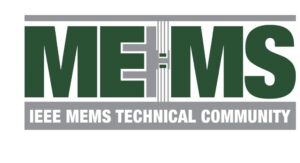The IEEE MEMS Technical Community is obviously a technical community, not a council or society. An IEEE Technical Community is perhaps best thought of as a precursor to an eventual council or society. As such, the goals of the IEEE MEMS Technical Community include not only fostering activity and growth in MEMS across IEEE and beyond, but also eventual transition to a council or (if appropriate) a society.
Figure 1 below summarizes the process by which a technical community can transition to a council or society. As shown, the standard procedure involves first a transition from technical community to council, then from council to society. Since MEMS already has numerous activities throughout IEEE and outside, it arguable should be a candidate to achieve society status faster than normal. Another argument for society status is that the MEMS community can benefit most if people can become members of an entity–something that a society can do, but not a council. So there is ample impetus for the MEMS Technical Community to transition directly to a society. One should keep in mind, however, that IEEE has been reluctant to let in new societies of late and have even been resistant to new councils.

Why Transition at All?
An IEEE technical community can already do many things that can benefit a technical area like MEMS. Perhaps the most important of these is the ability to recover funds generated by our activities that never came back to us in the past. The IEEE MEMS Technical Community can then use these funds to support
- Conference sponsorships
- Publication in IEEE Xplore for any MEMS-centric meeting that wants it
- MEMS growth activities, especially for students and industry
- Student travel support ÄEducational activities and resources, e.g., web-based courses on MEMS topics not normally covered at universities
- Efforts to preserve the history of MEMS, e.g., via video recorded interviews with the “movers and shakers”
- New publications, provided they make sense
While the above are nice, there are many things that an IEEE technical community cannot do, including
- Maintain a financial reserve
- Vote on the IEEE Technical Advisory Board (TAB)
- Generate and sponsor IEEE awards for MEMS
- Sponsor IEEE Fellow applications
- Sponsor chapters
If we want to do any of the above, we must transition to either a council or society. Again, the “proper” way to do this is to become a council first, then a society later, if possible.
Difference Between a Council and Society?
IEEE councils and societies can do many of the same things, including
- Sponsor meetings
- Generate periodicals (publications)
- Sponsor IEEE awards, including distinguished lecturers
- Sponsor IEEE Fellow applications
- Support a variety of growth activities, from educational, to networking, to WIE, to student travel support and special competitions
- Sponsor fellowships
- Form and sponsor chapters
- Generate standards
- Maintain a financial reserve
- Vote on the IEEE Technical Advisory Board (TAB)
The main difference:
- A Society has members, i.e., individuals who are members
- A Council does not have individual members, but rather has member societies
Since MEMS researchers and practitioners have not had the opportunity be members of any society, they could benefit greatly the sense of belonging and camaraderie that membership brings and that often encourages volunteer activities. This is one argument in favor of pushing faster towards an IEEE MEMS Society versus a council.
